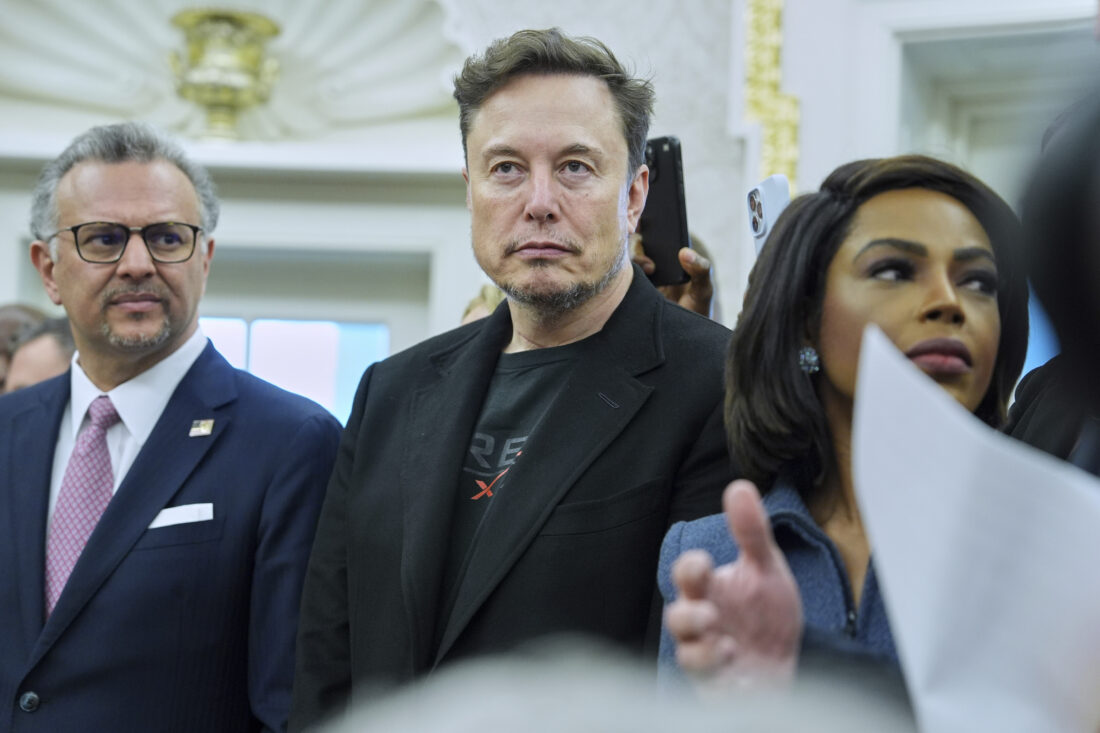
Elon Musk’s departure from his controversial role in the Trump administration’s Department of Government Efficiency (DOGE) has sent a powerful signal to Wall Street — and the market responded with overwhelming optimism. Tesla shares soared nearly 22% in May, making it the company’s best-performing month since November 2024. The rebound has pushed Tesla’s market capitalization back above the $1.1 trillion mark, a recovery investors had been hoping for after months of turbulence.
This surge follows a low point in March when shares fell to approximately $222 amid mounting concerns over Musk’s political entanglements and the resulting damage to Tesla’s brand identity.
Musk’s stint at DOGE, while lauded by certain factions of the administration, left many Tesla shareholders frustrated and deeply concerned. His split attention, the highly visible nature of his political role, and multiple social media clashes — including those targeting critics and even Tesla customers — contributed to a steep selloff earlier this year.
What should have been a time of technological focus for Tesla was instead marred by political distraction and reputational risk.

"Elon's role in the Trump Administration and DOGE created brand damage and a black cloud over the story," Wedbush analyst Dan Ives stated in a note to clients on Friday. His assessment echoed a growing sentiment on Wall Street that Musk’s political affiliations had weighed heavily on investor confidence.
According to Ives, approximately 20% of Tesla’s valuation was suppressed due to Musk’s proximity to the White House, particularly during a time when the company was on the brink of transformative new product releases.
Tesla’s rebound in May, closing at $346.46 on the final trading day of the month, was not just a market correction — it was an emphatic show of relief from investors who had been waiting for Musk to return full-time to his executive duties. This price surge represents an increase of $63.30 from the beginning of May, and an even more dramatic $124 gain from the March low.
The resulting boost in market cap — now hovering around $1.1 trillion — puts Tesla back in a league it hasn’t occupied since late 2024, when its shares peaked at $479.86.

The timing of Musk’s DOGE exit couldn’t have been more opportune for Tesla. The company is preparing to roll out its highly anticipated robotaxi fleet on June 12, a move seen as a pivotal milestone not just for Tesla but for the broader autonomous vehicle market.
According to Musk, the company has been testing fully self-driving Model Y vehicles — without anyone in the driver’s seat — on public streets in Austin for several days without incident. He also revealed that Tesla is a month ahead of schedule and expects to complete its first factory-to-customer autonomous delivery in June.
This type of progress is exactly what Tesla bulls had been hoping to see, but until recently, such developments were overshadowed by Musk’s political activities. Ray Wang, founder of Constellation Research, sounded a note of cautious optimism. “I’m excited there is going to be some competition in the robotaxi market,” Wang said during an appearance on FOX Business.
“You have Waymo operating in many regions, Zoox in Las Vegas, and now Tesla entering Austin and parts of Texas. He’s going to start with ten and then scale up to a thousand, but as you know, Musk tends to predict early and aim big — and those numbers don’t always arrive on time.”

Nonetheless, the return of Musk’s full focus to Tesla may improve execution on those ambitious promises. Wall Street analysts like Dan Ives are now raising their forecasts, with Wedbush’s price target for Tesla set at $500 — an additional 44% upside from the current trading level.
Ives emphasized that the removal of the so-called “White House overhang” was critical at a time when Tesla is entering “one of the most important technology periods in its history.”
That period includes not only the robotaxi initiative but also a ramp-up in Tesla’s Dojo supercomputer development, continued global factory expansions, and increased competition from Chinese automakers in the electric vehicle market. Tesla's future depends on navigating these challenges with precision — something that required Musk’s undivided attention. Investors were clearly eager to see him back in full command of his company.
From the political stage, Musk’s departure was framed as a moment of gratitude rather than retreat. In a formal address from the Oval Office, President Donald Trump praised Musk’s service in no uncertain terms. “Elon’s service to America has been without comparison in modern history,” Trump declared. “He’s already running one of the most innovative car companies in the world. If you look at his factories and compare them with some of the old factories we have, it’s a big difference.”

Trump’s comments underscore the unique role Musk played within the administration — a technocratic reformer brought in to slash waste, streamline federal operations, and inject private-sector dynamism into government. But for Tesla shareholders, that chapter may now be best left behind.
Musk himself has yet to fully comment on the impact of his government tenure on Tesla’s performance. However, in recent days, his posts on X (formerly Twitter) have pivoted sharply back toward product updates, customer engagement, and engineering breakthroughs — a notable shift from the political commentary and cultural disputes that dominated his feed during the DOGE period.
This redirection has been warmly received by both consumers and the investor community, with several large institutional buyers reportedly re-entering the stock as May progressed.
Tesla’s rebound also comes at a time of broader optimism in the tech and automotive sectors, with the Nasdaq regaining ground and investor appetite for AI and mobility innovations rising once more. Tesla, which straddles both worlds, is uniquely positioned to benefit — assuming it can maintain product momentum and avoid distractions.

What happens next remains to be seen. Tesla’s June 12 robotaxi event will be a closely watched inflection point, with early feedback from public road testing already drawing attention from both regulators and competitors. The possibility of Tesla achieving a meaningful first-mover advantage in self-driving ride-hailing remains tantalizing, though still uncertain.
For now, though, Elon Musk’s return to Tesla’s helm appears to have removed a heavy burden from the company’s valuation. The 22% gain in May is not just a number — it is a vote of confidence in Musk as a visionary CEO when his focus is undivided and centered on innovation, not politics.
With a $1.1 trillion market cap and major milestones on the horizon, Tesla is once again moving at full speed, powered by the same ambition that made it one of the most valuable companies in history.

-1750570235-q80.webp)
